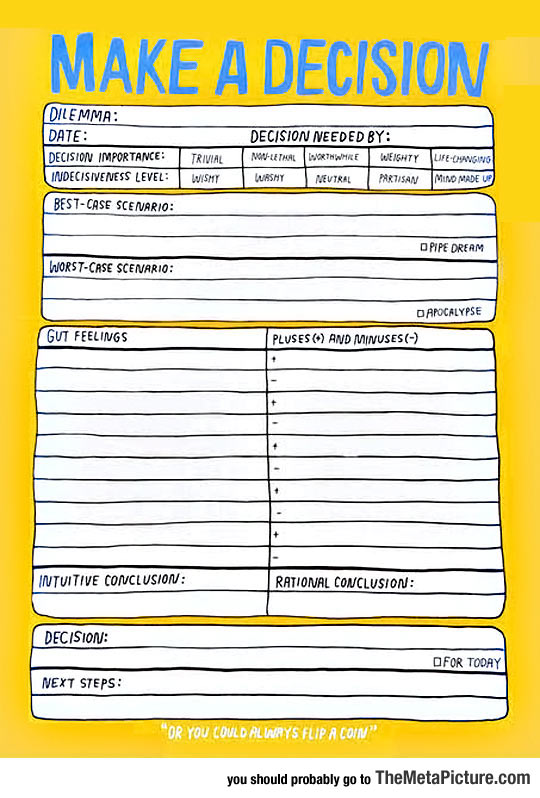Thinking through Problems
Critical thinking is the ability to analyze information and to come to sound conclusions. Human brains are primed to
develop this capacity in adolescence. Learning to separate fact from fiction is one of the primary developmental
tasks of becoming an adult.
Thoughts Are Not Facts
Thoughts do not equal facts. Thoughts are sometimes facts, but often they are simply opinions. Confusing the two can
lead to painful consequences – especially if we have come to believe negative opinions of ourselves are actually
true. How do you know the difference?
- Facts can be known — they can be checked and supported with evidence that people can agree
on.
- Opinions are based on a belief or viewpoint — they are not necessarily supported by evidence and not
everyone agrees.
Fact or Opinion? This quiz
tests your ability to distinguish between facts and opinions with regard to your self-perception. Ask your social
worker, therapist or another trusted adult to help you if you find yourself confused.
Watch for Unhelpful Thinking Styles
As children, our brains come up with ways to understand and protect us from situations that frighten us or are
outside our control. As we get older and have more options available to us, these thinking styles sometimes begin to
hinder us more than help us. Take some time to look at these
unhelpful thinking
styles
(also called cognitive distortions) and see if you recognize any in yourself. Ask your social worker
or therapist to help you if you find yourself stuck in any particular pattern.
Can You Spot Logical Fallacies?
A logical fallacy is a flaw in reasoning. Logical fallacies often creep into arguments when people are trying to
persuade other people to do things. Whether or not the other person is aware of the error in their logic, you don’t
have to be fooled by them. Check out
YourLogicalFallacyIs.com to learn more about some of the common logical fallacies. You can
also view a
poster of the 24 logical fallacies
(and download it), or you can click
through each fallacy one by one
.
Whose Problem Is it?
Adapted from handout developed by The Speech Resource via TeachersPayTeacher.com and made available for educational
and noncommercial use
Sometimes we want to solve problems that worry us but aren’t within our power to solve. We can’t control what another
person chooses to do — we can only change our own behavior. Can the problem be fixed by what we think, say or do? If
so, then it’s within our power to solve.
If the problem is bigger than us, however, then we are limited in what we can do to solve it. We can look at the ways
we may be contributing to the problem, and then take responsibility for our actions. We can set a boundary to
protect ourselves from harm as best we can. We can offer support, if appropriate, or ask for help from someone who
has the ability to do something about it. You can try using this decision-making tree to help you sort it out your
options.

Making Sound Decisions
Here are some tools you can use when you need to make a decision when there is no obvious answer or clear
choice.

To Change or Not To
Change
Use this worksheet to explore the advantages and disadvantages of changing and
not changing. Start with the “advantages of not changing” in the upper left square and working your way around the
squares clockwise (to the right, down, then left).
The Problem Grid (printable)
and The Problem Grid
(digital interactive version)
Use this worksheet to help you explore a problem from different
perspectives — your own, the other person’s, and a neutral observer.
Solution-Focused Problem
Solving
Use this structured worksheet to think through possible solutions, identify their advantages and
disadvantages, choose an option, and put it into action.
SWOT Analysis
This tool
can be used to think through the potential strengths, weakness, opportunities and threats (SWOTs) of a situation.